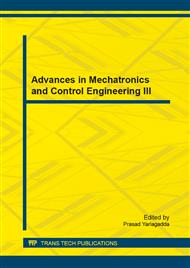p.352
p.360
p.365
p.373
p.377
p.382
p.388
p.392
p.399
Nonlinear Model Predictive Control for Automatic Train Operation with Actuator Saturation and Speed Limit
Abstract:
This paper addresses a position and speed tracking problem for high-speed train automatic operation with actuator saturation and speed limit. A nonlinear model predictive control (NMPC) approach, which allows the explicit consideration of state and input constraints when formulating the problem and is shown to guarantee the stability of the closed-loop system by choosing a proper terminal cost and terminal constraints set, is proposed. In NMPC, a cost function penalizing both the train position and speed tracking error and the changes of tracking/braking forces will be minimized on-line. The effectiveness of the proposed approach is verified by numerical simulations.
Info:
Periodical:
Pages:
377-381
Citation:
Online since:
October 2014
Authors:
Price:
Сopyright:
© 2014 Trans Tech Publications Ltd. All Rights Reserved
Share:
Citation:


